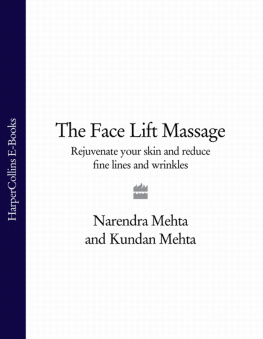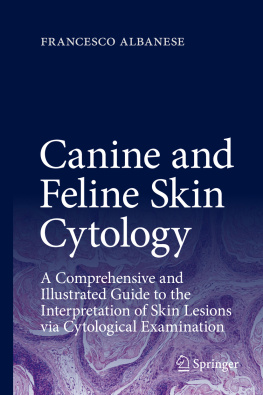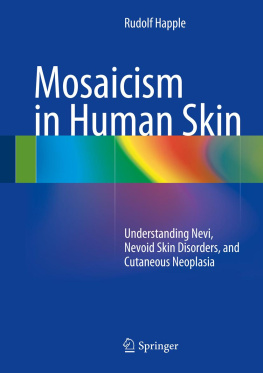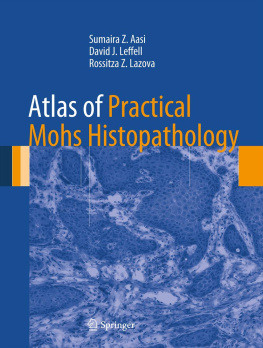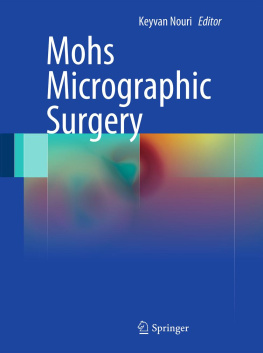Chirurgia Facit Saltum
Understanding the development of surgical methods itself becomes a fascinating philosophical pursuit. When it comes to natural science, the adage that applies is natura non facit saltumborrowed from Carl Linnaeus by Charles Darwin for his Origin of Species and later adopted as a motto by Alfred Marshall for his Principles of Economics ; it simply means nature does not make a leap. In other words, changes in the natural world happen slowly and incrementally [1]. Darwin wrote: Multiform difficulties will occur to everyone on this theory. Most can I think be satisfactorily answerednatura non facit saltum answers some of the most obviousthe slowness of the change, and only a very few undergoing change at any one time answers other [2].
Thomas Kuhn in his seminal work, The Structure of Scientific Revolutions [3], sought to understand the nature of scientific innovation and concluded that when it came to breakthroughs in science, natura non facit saltum did not apply. Kuhn felt that dominant views of the history of science failed to capture the necessity for major scientific achievementthe abandonment of old paradigms and the introduction of new ways of thinking or applying technology. Kuhn wrote [4]: One cannot move from the old to the new simply by adding to what was already known [] nor one can fully describe the new in the vocabulary used by the old and vice-versa. Advances or new developments in surgical or medical techniques have often been stymied by existing paradigms. Kuhn coined the word paradigm shift that has become so commonplace that it is part of an ironic narrative, a process where old ideas end up crushed by the audaciousness of new thinking.
Ian Hacking, the philosopher, explains further [5]: Normal science does not aim at novelty but at clearing up the status quo. It tends to discover what it expects to discover. Kuhns model can be simplified by this flow chart: Paradigm Normal Science Anomalies New Paradigm.
The acceptance of a paradigm nowadays becomes the occasion for the formation of a new professional subdiscipline, with its own journals, scientific societies and textbooks. Once a paradigm is accepted, the individual scientist almost takes it for granted. He need no longer attempt to build his field anew, starting from first principles and justifying the use of each concept introduced [6]. We have seen this repeatedlythe reluctance to abandon sentinel node biopsies in melanoma, well after the evidence has passed, being just one example. Strenuous and diligent attempts force nature into conceptual boxes by a professional medical system that makes specialties function within silos, or behave fiscally like cartels. Set paradigms obliterate possibilities of change, and therefore, startling advances in medicine do not often happen due to practicing physicians, but often despite them.
Kuhn wasnt a philosopher, he was a physicist. Interestingly, it was his study of Aristotle that first led him towards his ground-breaking treatise on scientific revolutions. Kuhn wrote [7]: I approached Aristotles texts with the Newtonian mechanics I had previously read clearly in mind. The question I hoped to answer was how much mechanics Aristotle had known, how much he had left for people like Galileo and Newton to discover. Given that formulation, I rapidly discovered that Aristotle had known almost no mechanics at all. Everything was left for his successors, mostly those of the sixteenth and seventeenth centuries. That conclusion was standard, and it might in principle have been right. But I found it bothersome because, as I was reading him, Aristotle appeared not only ignorant of mechanics, but a dreadfully bad physical scientist as well. About motion, in particular, his writings seemed to me full of egregious errors, both of logic and of observation. Later Kuhn realized his failure to understand Aristotle was only because he was entrapped by the world of his own learned paradigms. This led him towards his theories of paradigm shifts that explain how even great scientists coexist within intellectual frameworksand led to his conclusion that without stepping outside the frame, it is easy to miss seeing the whole pictureand in the process, Kuhn changed the way in which we view new scientific advances.






